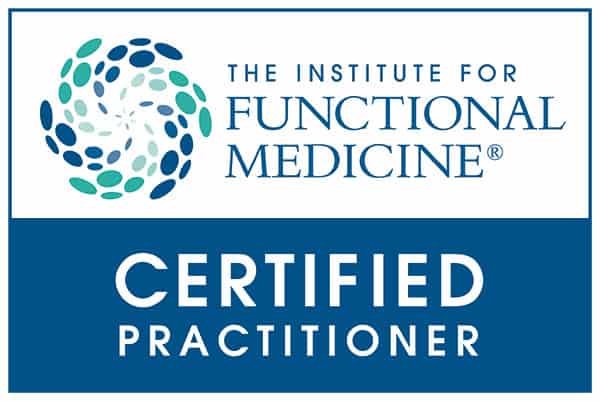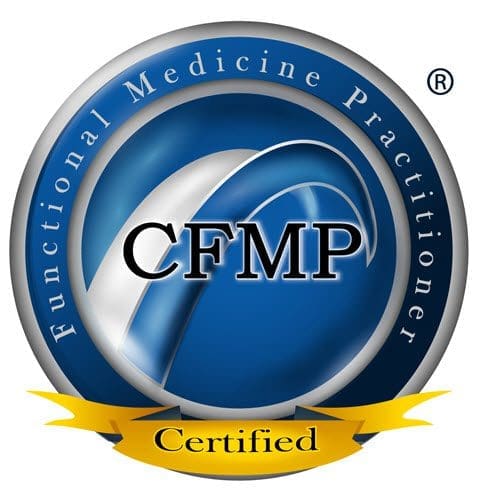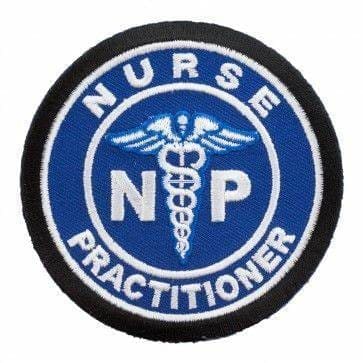Learn how chiropractic care can alleviate discomfort and enhance your quality of life through joint and biomechanical restoration.
Contents
Chiropractic Care for Joint and Biomechanical Restoration: A Comprehensive Guide
Introduction
Picture this: you’re trying to open a stubborn jar, but your wrist won’t cooperate—it’s stiff, achy, and feels like it’s staging a protest. Now imagine your whole body acting like that jar, with joints creaking and muscles grumbling. That’s where chiropractic care comes in, like a skilled mechanic for your body’s framework. Chiropractic care focuses on diagnosing and treating mechanical disorders of the musculoskeletal system, particularly the spine, to restore joint function and improve overall biomechanics. This blog post delves into why chiropractic care can be a game-changer for joint health, explores the role of environmental factors in joint pain, and highlights why Dr. Alexander Jimenez stands out in El Paso for treating personal injury cases. We’ll sprinkle in a bit of humor to keep things light, but rest assured, the science and clinical insights are serious business.
This post draws on the expertise of Dr. Brandon Brock, a chiropractor and educator who teaches advanced techniques for joint restoration, and Dr. Alexander Jimenez, a leading practitioner in El Paso known for his work with accident victims. We’ll also incorporate scientific studies that examine the gut-brain axis and brain plasticity, illustrating how chiropractic care may impact more than just your aching back. By the end, you’ll have a clear picture of how chiropractic care works, why it matters, and when to seek professional help.
Section 1: The Science Behind Chiropractic Care
Chiropractic care is like giving your body a tune-up, focusing on the spine and joints to keep everything running smoothly. The core idea is that misalignments in the spine—called subluxations—can disrupt nerve signals, leading to pain, stiffness, or even problems in other parts of the body. Chiropractors use hands-on techniques, such as spinal manipulations, to correct these misalignments, aiming to restore proper function and alleviate discomfort.
Biomechanics of Spinal Manipulation
Let’s get a bit technical (but not too much—promise!). When a chiropractor performs an adjustment, they apply a quick, controlled force to a specific joint. This can cause a tiny “pop” (the satisfying sound you hear) due to gas bubbles collapsing in the synovial fluid within the joint, a process known as cavitation. Research shows that these adjustments can move vertebral bodies into a “para-physiological” zone, meaning they move just beyond their normal range without causing harm, thereby helping to restore mobility (Peterson & Bergmann, 2012). This movement can also trigger reflex responses in muscles far from the adjustment site, like a domino effect that eases tension throughout the body.
For example, if your lower back feels like a cranky old door hinge, an adjustment might loosen it up, reducing pain and improving your mobility. Studies suggest these changes can enhance joint function and even influence how your nervous system processes signals, potentially improving coordination (Haavik & Murphy, 2011). However, not every adjustment works miracles, and results depend on the patient’s condition and the chiropractor’s skill.
Mitochondria and Joint Health
Here’s where things get a bit sci-fi: your joints rely on tiny powerhouses called mitochondria to keep cells healthy. In conditions like osteoarthritis, where cartilage breaks down, mitochondrial dysfunction can exacerbate the condition by reducing energy production and increasing inflammation. Chiropractic care might help by reducing mechanical stress on joints, which could support mitochondrial health and slow joint degeneration (Blanco et al., 2011). Think of it like giving your joints a break from carrying a heavy backpack all day—less stress, better function.
References
- Blanco, F. J., Rego, I., & Ruiz-Romero, C. (2011). The role of mitochondria in osteoarthritis. Nature Reviews Rheumatology, 7(3), 161-169. https://pubmed.ncbi.nlm.nih.gov/21173794/
- Haavik, H., & Murphy, B. (2011). The role of spinal manipulation in addressing disordered sensorimotor integration and altered motor control. Journal of Electromyography and Kinesiology, 21(6), 961-976. https://pubmed.ncbi.nlm.nih.gov/20889343/
- Peterson, D. H., & Bergmann, T. F. (2012). Chiropractic Technique: Principles and Procedures. Mosby.
Section 2: Environmental Factors and Joint Pain
Ever wonder why your knees complain after a long day at work or why your neck feels like it’s auditioning for a role as a rusty gate? Environmental factors—such as repetitive motions, poor posture, or even an uncomfortable chair—can put significant stress on your joints. Let’s break down how these factors contribute to joint pain and how chiropractic care can help.
Physical Stress and Repetitive Motions
If you’re lifting heavy boxes all day or typing like you’re racing to set a world record, your joints are taking a beating. Repetitive motions can strain muscles, ligaments, and tendons, leading to inflammation and pain. Athletes, construction workers, or even desk jockeys are all at risk. Chiropractic care can step in like a superhero, using adjustments to realign joints and reduce inflammation. For instance, a study found that spinal manipulative therapy can help ease low back pain caused by repetitive stress, improving mobility and reducing discomfort (Globe et al., 2009).
Poor Ergonomics and Lifestyle Factors
Your office chair might be your joints’ worst enemy. Slouching at a desk or craning your neck to stare at a phone can misalign your spine, putting pressure on joints. Add in environmental toxins—like pollutants that might increase inflammation—or a diet lacking key nutrients, and your joints are in for a rough ride. Chiropractors often pair adjustments with advice on ergonomics and nutrition to tackle these issues. Imagine your chiropractor as a coach, guiding you to sit up straight and eat foods that support your joints’ health (Seaman & Cleveland, 1997).
Table: Common Environmental Factors Affecting Joint Health
| Factor | Impact on Joints | Chiropractic Solution |
|---|---|---|
| Repetitive Motions | Strains muscles and joints, causing inflammation | Adjustments to realign joints, reduce stress |
| Poor Posture | Misaligns spine, increases joint pressure | Spinal manipulations, posture advice |
| Environmental Toxins | May increase systemic inflammation | Nutritional counseling, lifestyle changes |
| Sedentary Lifestyle | Weakens muscles, stiffens joints | Exercise recommendations, mobility therapy |
References
- Globe, G., Morris, C., Whalen, W., Cashore, C., & Hinrichs, R. (2009). Biomechanical modeling assessment for spinal manipulative therapy: application to treating the low back using a flexion-distraction technique on an instrument-adjusting table. Chiropractic & Osteopathy, 17, 12. https://pubmed.ncbi.nlm.nih.gov/19954569/
- Seaman, D. R., & Cleveland, C. (1997). Spinal pain syndromes: nociceptive, neuropathic, and psychologic mechanisms. Journal of Manipulative and Physiological Therapeutics, 20(2), 108-119. https://pubmed.ncbi.nlm.nih.gov/9046451/
Section 3: Personal Injury Cases and Dr. Alexander Jimenez
Car accidents can turn your body into a jigsaw puzzle with pieces scattered everywhere—muscles strained, ligaments sprained, and joints out of whack. In El Paso, Texas, Dr. Alexander Jimenez is like the master puzzle-solver for personal injury cases, helping accident victims put their bodies back together.
Expertise in Personal Injury
Dr. Jimenez, a chiropractor with advanced credentials, specializes in treating injuries from motor vehicle accidents (MVAs). His clinic, El Paso Back Clinic, offers a range of services to address musculoskeletal injuries, from whiplash to rotator cuff damage. He likely uses advanced imaging techniques, such as MRI or CT scans, to obtain a clear picture of the damage, ensuring that treatments are tailored to each patient’s specific needs. His role doesn’t stop at treatment—he also helps patients navigate the legal aspects, providing detailed documentation for insurance claims or court cases (El Paso Back Clinic, n.d.).
Advanced Diagnostics and Dual-Scope Procedures
While specific details on “dual-scope procedures” are scarce, Dr. Jimenez’s approach likely involves combining diagnostic tools—like imaging and physical exams—with chiropractic techniques to create a comprehensive treatment plan. For example, after a car accident, he might use an MRI to spot a herniated disc, then apply spinal adjustments to relieve pressure on nerves. This blend of high-tech diagnostics and hands-on care makes him a standout in El Paso, where personal injury cases are common due to the high volume of traffic on busy roads and highways.
Why El Paso Needs Experts Like Dr. Jimenez
El Paso’s bustling traffic means accidents happen, and injuries like whiplash or spinal misalignments are all too common. Dr. Jimenez’s ability to connect medical care with legal needs is akin to having a translator who speaks both the languages of “doctor” and “lawyer.” His work ensures patients get the care they need while building a strong compensation case, making him a vital resource for the community.
References
- El Paso Back Clinic. (n.d.). Retrieved from https://elpasobackclinic.com/
Section 4: The Gut-Brain Axis and Chiropractic Care
Now, let’s take a wild ride into the world of your gut—yes, that squishy, food-processing center might have more to do with your joints than you think! The gut-brain axis is the communication network between your digestive system and your brain, and it’s a hot topic in health research. Let’s explore how it might tie into chiropractic care.
Gut Health and Inflammation
Your gut is home to trillions of microbes that help regulate inflammation throughout your body. If those microbes get out of balance—say, due to a poor diet or stress—it can lead to systemic inflammation, which may cause your joints to feel like they’re in pain. Research suggests that a healthy gut microbiome can reduce inflammation, potentially easing joint pain (Cryan & Dinan, 2012). Chiropractic care might help by improving nervous system function, which could support better gut health through the vagus nerve, a key player in the gut-brain axis.
The Gut-Liver-Brain Connection
There’s also a broader gut-liver-brain axis, where imbalances can contribute to diseases affecting multiple systems. For example, a sluggish liver or an unhealthy gut may increase inflammation, placing additional stress on joints. While chiropractic care isn’t a direct treatment for liver or gut issues, adjustments may improve nerve signaling, potentially supporting overall health (Wang & Wang, 2016). It’s like giving your body’s communication system a better Wi-Fi signal—everything works a bit smoother.
References
- Cryan, J. F., & Dinan, T. G. (2012). Mind-altering microorganisms: the impact of the gut microbiota on brain and behaviour. Nature Reviews Neuroscience, 13(10), 701-712. https://pubmed.ncbi.nlm.nih.gov/22968181/
- Wang, H. X., & Wang, Y. P. (2016). Gut microbiota-brain axis. Chinese Medical Journal, 129(19), 2373-2380. https://pubmed.ncbi.nlm.nih.gov/27625094/
Section 5: Brain Plasticity and Chiropractic Care
Your brain is like a super-smart Play-Doh, constantly reshaping itself to adapt to new challenges. This ability, known as brain plasticity, is crucial for recovery from injuries, and chiropractic care may play a role in supporting it.
Brain Plasticity in Injury Recovery
When you injure your spine or joints, your brain has to rewire itself to cope with the changes. For example, after a spinal cord injury, the brain may reorganize to restore certain functions, such as movement or sensation. Studies show that therapies, including chiropractic adjustments, can support this process by improving nerve signaling and reducing pain, helping the brain adapt more effectively (Kalron et al., 2015).
Chiropractic’s Role in Neural Communication
Chiropractic adjustments might act like a reset button for your nervous system. By correcting spinal misalignments, they can reduce nerve irritation, potentially improving how your brain communicates with your body. Research suggests that spinal manipulations can activate sensory pathways, enhancing coordination and motor control (Pickar & Bolton, 2012). It’s like clearing static from a phone line so your brain and body can have a clearer conversation.
References
- Kalron, A., Baransi, H., Magalashvili, D., & Gabai, A. (2015). Brain Plasticity and Functional Rehabilitation in Multiple Sclerosis. Neural Plasticity, 2015, 312941. https://pubmed.ncbi.nlm.nih.gov/26221186/
- Pickar, J. G., & Bolton, P. S. (2012). Spinal manipulative therapy and somatosensory activation. Journal of Electromyography and Kinesiology, 22(5), 785-794. https://pubmed.ncbi.nlm.nih.gov/22483611/
The Role of Chiropractic Care in Improving Your Health- Video
Section 6: Dr. Brandon Brock’s Contributions
Dr. Brandon Brock is like the rock star of chiropractic education, blending his expertise as a chiropractor and nurse practitioner to teach others how to help patients. Based in Dallas, Texas, he holds a Doctorate in Family Nursing Practice from Duke University and a Doctorate in Chiropractic, with additional credentials in functional neurology and nutrition (Brock, n.d.).
Teaching Joint and Biomechanical Restoration
Through his seminars, Dr. Brock shares advanced techniques for examining and treating joint issues. He covers everything from orthopedic testing to soft tissue manipulation and even low-level laser therapy for neurological rehab. His approach is like a master chef’s recipe—combining science, hands-on skills, and a dash of creativity to help patients move better and feel better. His teachings emphasize understanding the “why, where, when, and how” of interventions, ensuring chiropractors can tailor treatments to each patient’s needs (NWHSU Continuing Education, n.d.).
Why His Work Matters
Dr. Brock’s focus on integrating neurology, nutrition, and chiropractic care underscores the holistic approach to joint restoration. By teaching chiropractors to consider the whole body—not just the sore spot—he’s helping to advance the field, making treatments more effective and personalized.
References
- Brock, B. (n.d.). About Dr. Brock. Retrieved from http://www.drbrocklectures.com/about.html
- NWHSU Continuing Education. (n.d.). Joint and Biomechanical Restoration: Stopping the Pain Cycle. Retrieved from https://www.enrole.com/nwhealth/jsp/course.jsp?categoryId=FDFE6BD0&courseId=JBR22
Section 7: Additional Scientific Insights
Chiropractic care doesn’t exist in a vacuum—it’s part of a broader health picture. Let’s explore some additional research that sheds light on why it works and how it connects to other aspects of health.
Low-Level Light Therapy
Low-level light therapy (LLLT) is like giving your cells a gentle pep talk with light. It’s been studied for its effects on the brain and eyes, potentially reducing inflammation and supporting healing. Some chiropractors, such as Dr. Brock, use LLLT in conjunction with adjustments to enhance joint and neurological recovery (Hamblin, 2016). It’s not a magic wand, but it might give your joints an extra boost.
Sex Hormones and Brain Function
Your hormones can influence how your brain and joints work together. For example, estrogen and testosterone influence brain function and inflammation, which may play a role in joint pain, particularly in conditions such as arthritis. Chiropractic care, by improving nervous system function, might indirectly help balance these effects, though more research is needed (Craft et al., 2015).
Posture and Neural Substrates
Good posture isn’t just about looking confident—it’s about keeping your brain and body in sync. Research shows that the brain’s neural substrates control posture, and spinal misalignments can disrupt this system. Chiropractic adjustments may help by restoring proper alignment and improving how your brain manages posture and movement (Kawasaki et al., 2017).
References
- Craft, R. M., Mogil, J. S., & Aloisi, A. M. (2015). Understanding the broad influence of sex hormones and sex differences in the brain. Journal of Neuroscience Research, 93(1), 1-13. https://pubmed.ncbi.nlm.nih.gov/25257702/
- Hamblin, M. R. (2016). Low-level light therapy of the eye and brain. Eye and Brain, 8, 77-89. https://pubmed.ncbi.nlm.nih.gov/28539774/
- Kawasaki, Y., Onozuka, M., & Shimada, K. (2017). Neural substrates involved in the control of posture. Advanced Robotics, 31(1-2), 2-12. https://www.tandfonline.com/doi/abs/10.1080/01691864.2016.1249379
Conclusion
Chiropractic care offers a promising approach to restoring joint function and improving biomechanics, backed by a growing body of research. From the biomechanical effects of spinal manipulations to the potential influence on the gut-brain axis and brain plasticity, chiropractors like Dr. Brandon Brock and Dr. Alexander Jimenez are pushing the boundaries of what this field can achieve. In El Paso, Dr. Jimenez’s expertise in personal injury cases underscores the real-world impact of chiropractic care, enabling accident victims to recover while navigating complex legal processes.
While we’ve added a touch of humor to make this journey through joints and spines more enjoyable, the information here is rooted in serious science and clinical practice. Chiropractic care isn’t a one-size-fits-all solution, and results can vary. Always consult a qualified healthcare professional to determine if it’s right for you.
Disclaimer: This blog post is for informational purposes only and is not a substitute for professional medical advice, diagnosis, or treatment. Always consult a licensed healthcare provider before starting any new therapy.
Professional Scope of Practice *
The information on "Chiropractic Care Methods for Joint and Biomechanical Restoration" is not intended to replace a one-on-one relationship with a qualified health care professional or licensed physician and is not medical advice. We encourage you to make healthcare decisions based on your research and partnership with a qualified healthcare professional.
Blog Information & Scope Discussions
Welcome to the wellness blog of El Paso Back Clinic, where Dr. Alex Jimenez, DC, FNP-C, a board-certified Family Practice Nurse Practitioner (FNP-C) and Chiropractor (DC), presents insights on how our team is dedicated to holistic healing and personalized care. Our practice aligns with evidence-based treatment protocols inspired by integrative medicine principles, similar to those found on dralexjimenez.com, focusing on restoring health naturally for patients of all ages.
Our areas of chiropractic practice include Wellness & Nutrition, Chronic Pain, Personal Injury, Auto Accident Care, Work Injuries, Back Injury, Low Back Pain, Neck Pain, Migraine Headaches, Sports Injuries, Severe Sciatica, Scoliosis, Complex Herniated Discs, Fibromyalgia, Chronic Pain, Complex Injuries, Stress Management, Functional Medicine Treatments, and in-scope care protocols.
Our information scope is limited to chiropractic, musculoskeletal, physical medicine, wellness, contributing etiological viscerosomatic disturbances within clinical presentations, associated somato-visceral reflex clinical dynamics, subluxation complexes, sensitive health issues, and functional medicine articles, topics, and discussions.
We provide and present clinical collaboration with specialists from various disciplines. Each specialist is governed by their professional scope of practice and their jurisdiction of licensure. We use functional health & wellness protocols to treat and support care for the injuries or disorders of the musculoskeletal system.
Our videos, posts, topics, subjects, and insights cover clinical matters, issues, and topics that relate to and directly or indirectly support our clinical scope of practice.*
Our office has reasonably attempted to provide supportive citations and has identified the relevant research studies or studies supporting our posts. We provide copies of supporting research studies available to regulatory boards and the public upon request.
We understand that we cover matters that require an additional explanation of how they may assist in a particular care plan or treatment protocol; therefore, to discuss the subject matter above further, please feel free to ask Dr. Alex Jimenez, DC, APRN, FNP-BC, or contact us at 915-850-0900.
We are here to help you and your family.
Blessings
Dr. Alex Jimenez, DC, MSACP, APRN, FNP-BC*, CCST, IFMCP, CFMP, ATN
email: coach@elpasofunctionalmedicine.com
Licensed as a Doctor of Chiropractic (DC) in Texas & New Mexico*
Texas DC License # TX5807
New Mexico DC License # NM-DC2182
Licensed as a Registered Nurse (RN*) in Texas & Multistate
Texas RN License # 1191402
ANCC FNP-BC: Board Certified Nurse Practitioner*
Compact Status: Multi-State License: Authorized to Practice in 40 States*
Graduate with Honors: ICHS: MSN-FNP (Family Nurse Practitioner Program)
Degree Granted. Master's in Family Practice MSN Diploma (Cum Laude)
Dr. Alex Jimenez, DC, APRN, FNP-BC*, CFMP, IFMCP, ATN, CCST
My Digital Business Card








